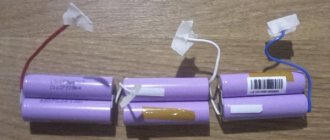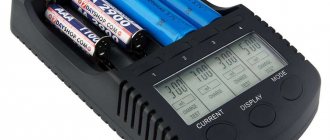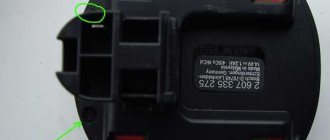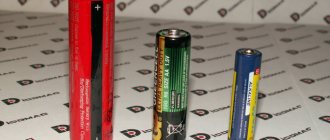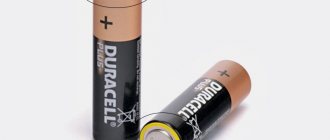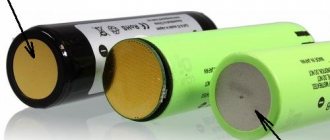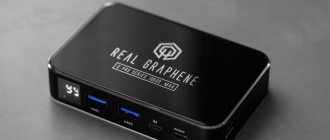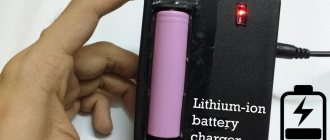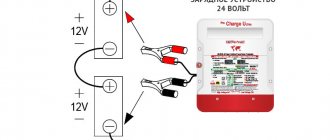When they talk about lithium batteries or accumulators, most often they don’t even realize that almost a dozen varieties have appeared in the last couple of years, each of which is lithium with various additives of other chemical elements, which ultimately differ significantly from each other.
Let's look at their types and start with the classics:
Li-ion batteries
Lithium-ion batteries are classic rechargeable batteries in which lithium ions move from the negative electrode to the positive electrode during discharge and back again when charging. Lithium-ion batteries are widely used in consumer electronics. They are one of the most popular types of rechargeable batteries for portable electronics, with one of the best energy densities, no memory effect and slow loss of charge when not in use (low self-discharge).
This series covers cylindrical and prismatic battery sizes. Li-ion has the highest power density of any old type battery. Very light weight and long life cycle makes it an ideal product for many solutions.
Operating principle
The operation of lithium batteries is based on electrochemical potential, the essence of which is the ability of metals to give off negative charges. When an electrical circuit is connected, a chemical reaction occurs at the anode of the current source, accompanied by the formation of free electrons on its surface. According to the laws of physics, the released electrons tend to the positive side - the cathode - in order to restore balance, but they are kept from moving by the electrolyte located between the anode and the cathode. Thus, negative charges are forced to move towards positive ones “bypassing” - through the entire electrical circuit, creating a current.
Positive ions formed on the anode side after electrons "escape" pass through the electrolyte to the cathode to satisfy the need for negative charges. The moment all the electrons move to the negative electrode, the battery will be discharged.
The charging process releases electrical energy into the circuit, thereby triggering a reverse reaction in the battery - the accumulation of electrons at the anode. After the battery is completely recharged, it can be reconnected to the circuit.
ATTENTION: even when in standby mode, the batteries lose some of their charge. At the same time, they have such a characteristic as aging - a gradually occurring inability to retain the original amount of charge.
LTO batteries
Lithium titanate (lithium titanate) is a relatively new class of lithium-ion batteries (read more here). It is characterized by a very long life cycle, measured in thousands of cycles. Lithium lead titanate is also very safe and comparable in this regard to iron phosphate. The energy density is lower than other lithium-ion power sources and its rated voltage is 2.4V.
This technology features very fast charging, low internal resistance, very high life cycle and excellent endurance (also safety). LTO has found its application mainly in electric vehicles and wristwatches. Recently, it has begun to find application in mobile medical devices due to its high security. One of the features of the technology is that it uses nanocrystals on the anode instead of carbon, which provides a much more efficient surface area. Unfortunately, this battery has lower voltages than other types of lithium batteries.
Peculiarities:
- Specific energy: about 30-110Wh/kg
- Energy density: 177 W * h/l
- Specific power: 3,000-5,100 W/kg
- Discharge efficiency: approximately 85%; charging efficiency more than 95%
- Energy-price: 0.5 W/dollar
- Shelf life: >10 years
- Self-discharge: 2-5%/month
- Durability: 6000 cycles to 90% capacity
- Nominal voltage: 1.9 to 2.4 V
- Temperature: -40 to +55°C
- Charging method: Uses stable constant current, then constant voltage until it reaches the threshold.
Chemical formula: Li4Ti5O12 + 6LiCoO2 < > Li7Ti5O12 + 6Li0.5CoO2 (E=2.1 V)
Li-Polymer batteries
Lithium polymer has a higher energy density in terms of weight than lithium-ion batteries. In very thin cells (up to 5 mm), lithium polymer provides high volumetric energy density. Excellent stability in overvoltage and high temperatures.
This series of batteries can be produced in the range from 30 to 23000 mAh, prismatic and cylindrical housing types. Lithium polymer batteries offer a number of advantages: greater energy density by volume, flexibility in cell sizes, and a wider margin of safety, with excellent voltage stability even at high temperatures. Main areas of application: portable players, Bluetooth, wireless devices, PDAs and digital cameras, electric bicycles, GPS navigators, laptops, e-readers.
Peculiarities:
- Rated voltage: 3.7V
- Charging voltage: 4.2±0.05V
- Charge current, speed: 0.2-10C
- Discharge voltage limit: 2.5 V
- Discharge speed: up to 50C
- Cycle endurance: 400 cycles
Standard sizes of lithium batteries
Now let's talk about something more mundane - the shape and size of lithium batteries. In other words, about their formats. Any battery available on the market is a representative of one of the standard formats, thanks to which we have excellent interchangeability in the event of an element failure. Let's look at the most common formats of modern lithium batteries.
Cylindrical elements
A popular lithium battery format that is used literally everywhere. Cylindrical batteries are installed both in a hand-held or headlamp, and in electric cars. We already said above that the power unit in a Tesla car consists of more than 7,000 NCR-type elements. To be more specific, we are talking about cylindrical Panasonic NCR18650B 3.7V 3400mAh cells.
Markings indicating dimensions are applied to the housing of cylindrical batteries. The first two numbers are the diameter in millimeters, and the rest are the length. Thus, a cell of size 18650 has a diameter of 18 mm and a length of 65 millimeters (the zero at the end is omitted). But 32650 batteries are twice as wide with the same length.
Prismatic elements
Prismatic lithium batteries are not used as often as cylindrical batteries, especially since their use is sometimes hidden. For example, if you buy a 12-volt lithium battery that is a direct replacement for its lead-acid counterparts in shape and size, then inside it will almost certainly be an assembly of connected prismatic cells.
Prismatic format lithium batteries can have different types of contacts (screw connectors, contact pads) and are a very good option for creating a high capacity or voltage battery assembly. Typically such elements are of the lithium iron phosphate type.
Elements in laminated foil
The average user is probably least likely to encounter lithium batteries collected in laminated foil. This is the format of lithium-ion and polymer batteries installed in smartphones. Of course, the scope of application is not limited to smartphones. This format is often used where what is needed is not a universal power source, but a proprietary one with atypical shape and dimensions.
Lithium batteries in foil are also popular among radio amateurs who assemble autonomous electronic devices. Due to their compactness, these batteries provide significant autonomy with a small footprint. The downside is the fragility of the element. A striking example is a common problem that one has to deal with when replacing the display on a smartphone. At the disassembly stage, you need to remove the glued battery. It is very difficult to do this without bending it. After deformation, it will not be possible to “bend” the battery back without consequences: with a high degree of probability, it will soon swell and lose its characteristics.
Leave a review / Ask a question
LiFePO4 batteries
Lithium iron phosphate has good safety characteristics, long service life (up to 2000 cycles), and low production cost. LiFePO4 batteries are well suited for high discharge current applications such as military equipment, power tools, electric bicycles, mobile computers, UPS and solar power systems.
As a new anode material for lithium-ion batteries, lifepo4 was first introduced in 1997 and has been continuously improved to date. It has attracted the attention of experts due to its reliable safety, durability, low environmental impact during disposal, and convenient charging and discharging characteristics. Many experts claim that lifepo4 batteries are by far the best option for autonomously powering electronics.
Useful tips
- Try to completely discharge and charge the battery regularly, but not more than once every 2-3 months, this will extend its service life.
- Do not always fully charge and discharge the battery. This will have a beneficial effect on the resource and there will be no problems if the element ends up in a warmer environment.
- The battery should be stored at approximately 40-50% charge in a cool place.
- When overheated, the battery life decreases.
- Don't be afraid to partially charge the cell. Previously, there was a stereotype that the battery must be fully charged and completely discharged due to the special “memory” effect. However, this applied to older types of batteries and does not need to be followed now.
That's all, I hope now you have learned more about the batteries that you deal with every day, and our tips will help extend their service life.
Li-SO2 batteries
Lithium sulfur dioxide (Li and SO2 battery) – these batteries have high energy density and good resistance to high power discharge. Such elements are used mainly in military science, meteorology and astronautics.
Lithium sulfur dioxide batteries with a lithium metal anode (the lightest of all metals) and a liquid cathode containing a porous carbon current collector filled with sulfur dioxide (SO2) produce a voltage of 2.9 V and are cylindrical in shape.
Peculiarities:
- High operating voltage, stable throughout most of the discharge
- Extremely low self-discharge
- Performance in extreme conditions
- Wide operating temperature range (-55°C to +65°C)
Protection
In conclusion, it is worth saying a few words about the protection installed on lithium batteries. Charge-discharge controller. These circuit boards are found on virtually all lithium batteries used in consumer electronics. Those elements that will work as part of the battery may not have such protection. Their charge and discharge will be controlled by a common battery controller.
Lithium Battery Controller
Another protection option is installed on many packaged lithium cells. These are safety valves to relieve excess pressure in the element housing. This prevents destruction of the housing.
The implementation of such protection may vary. For example, a number of manufacturers use foil with notches designed for a certain pressure value. In other cases, a spring may be installed, which, when a critical value is reached, opens and relieves pressure. In cylindrical housings, such protection is placed under the current output.
Li-MnO2 batteries
Lithium Manganese Dioxide (Li-MnO2 Battery) – These batteries have a lightweight lithium metal anode and a solid manganese dioxide cathode immersed in a non-corrosive, non-toxic organic electrolyte. This type of battery is EU RoHS compliant and is characterized by large capacity, high discharge capacity and long service life.
Li-MnO2 is widely used in backup power supplies, emergency beacons, fire alarms, electronic access control systems, digital cameras, medical equipment.
Peculiarities:
- High energy density
- Very stable discharge voltage
- More than 10 year shelf life
- Operating temperature: -40 to +60°C
Features of charging a lithium polymer battery
To maintain the full volume of the power source at all times, it is necessary to charge according to a schedule, namely, after discharging after 500 hours of equipment operation.
The polymer battery is sensitive to mechanical damage, hypothermia, as well as voltage surges and overloads, so you should only connect the battery to a stable power supply.
Li-SOCL2 batteries
Lithium thionyl chloride (lithium-SOCl2) batteries have a lightweight lithium metal anode and a liquid cathode containing a porous carbon current collector filled with thionyl chloride (SOCl2). Li-SOCL2 batteries are ideal for automotive devices, medical devices, and military and aerospace applications. They have the widest operating temperature range from -60 to + 150°C.
Peculiarities:
- High energy density
- Long shelf life
- Wide temperature range
- Good sealing
- Stable discharge voltage

